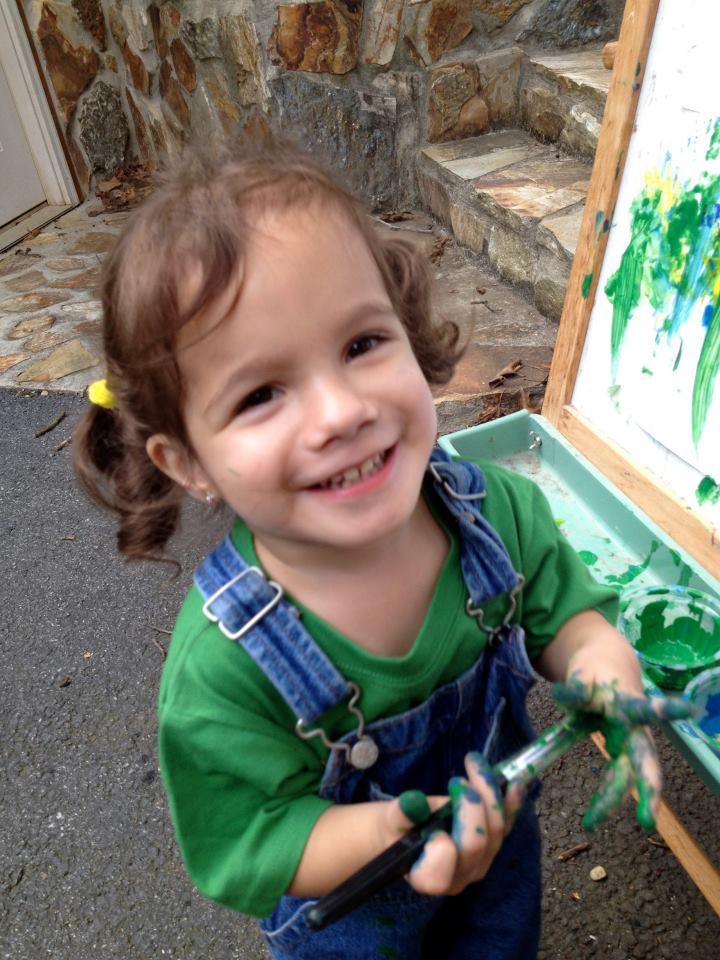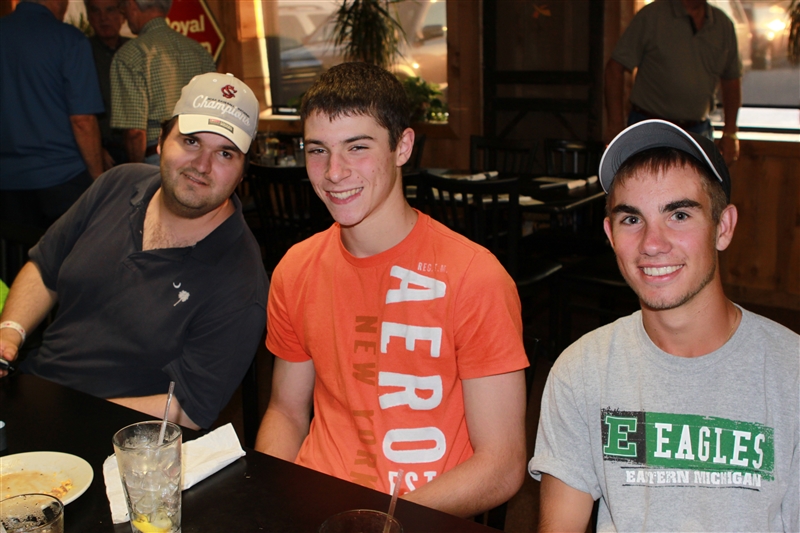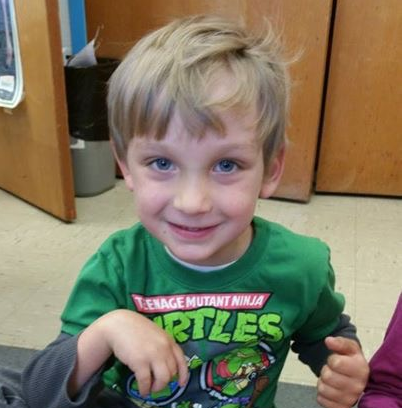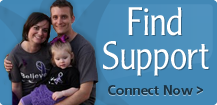 Pediatric physical therapy (PT) is conducted by a licensed physical therapist who has graduated from an accredited physical therapy degree program. Most children who have hemiplegia receive services from a physical therapist. This type of therapy will help your child reach developmental milestones like sitting, rolling, crawling, standing, walking and running. Physical therapists will work on balance, stretching, strenghtening, coordination, and motor planning. Physical therapists tend to work with gross motor skills that are involved in activities like walking and running, while occupational therapists work on more of the fine motor skills – those skills involved in holding a cup or writing. There is a great deal of cross over between the two types of therapies and your PT and OT may work at a team and coordinate efforts.
Pediatric physical therapy (PT) is conducted by a licensed physical therapist who has graduated from an accredited physical therapy degree program. Most children who have hemiplegia receive services from a physical therapist. This type of therapy will help your child reach developmental milestones like sitting, rolling, crawling, standing, walking and running. Physical therapists will work on balance, stretching, strenghtening, coordination, and motor planning. Physical therapists tend to work with gross motor skills that are involved in activities like walking and running, while occupational therapists work on more of the fine motor skills – those skills involved in holding a cup or writing. There is a great deal of cross over between the two types of therapies and your PT and OT may work at a team and coordinate efforts.
Physical therapy will begin with the therapist evaluating your child’s needs. Next they’ll work with you and your child (depending on the child’s age) to set goals. They’ll structure games, exercises, and stretching to help your child reach those goals and may provide a program so you can follow through at home. Physical therapy should be fun for the child and there’s nothing better than finding a creative therapist who is the right fit for your child.
 Some of the services offered by a physical therapist include:
Some of the services offered by a physical therapist include:
- Developmental activities
- Strengthening
- Movement and mobility
- Managing muscle tone
- Motor planning
- Balance and coordination
- Recreation and play
- Adapting activities of daily living and routines
- Designing, making, and fitting orthotics and splints
- Developing a home exercise and therapy routine or program
Learn the Lingo
- Gross Motor Skills are used for activites like standing, walking, running, and playing sports.
- Fine Motor Skills are used for activities like buttoning, writing, keyboarding, and playing a musical instrument.
- Core Muscles are the muscles in the core or trunk of your body that are used for large movements, like standing, sitting, walking, running, and staying upright. Remember when your parent told you to “stand up straight” – you needed core muscles to do that. Children with hemiplegia may have low muscle tone in their trunk and neck with results in poor posture, being unable to sit still or stand in one place, and fatigue. Therapists help the child strengthen their core muscles.
- Weight Bearing
- Motor Planning and Sequencing – The ability to plan and perform a motor task. Motor planning involves putting together a sequence of movements, such as those needed for walking or brushing your teeth. These movements are present in almost every daily task. Motor planning is complicated and depends on many things, all of which may be difficult for children with hemiplegia. Kids with hemiplegia may follow the typical sequence, but may do so at a slower rate. Sometimes motor planning in our kids is disorganized and they may need to be taught a specific sequence. Our children may have difficulty with the ability to think of what to do next and they may benefit from copying or imitating someone. They may have problems remembering how to do something and can usually benefit from breaking down a task or motor movement into smaller steps, allowing them to master each step, then putting all the steps together. One mom tells about teaching her daughter to tie her shoe with one hand. She didn’t present the entire task at once. At first, they worked together to simply cross the laces. When her daughter mastered that step, after days of practice, they worked on making a loop. After a few months of learning each part, they put them all together and her daughter successfully tied her shoes with one hand.
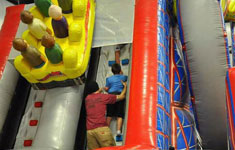 Crossing Midline – reaching across the middle of your body to pick up a toy on the opposite side. Therapists think this is a really important skill and you’ll often hear this term because it’s hard for a kid with hemiplegia to reach across his body. In addition to not having much movement in one arm and hand, many of our kids may feel like the center of their body is actually the middle of one side, so if she has right sided hemiplegia, she feels like the center of her body is the middle of the left side of her body. The OT and PT will work with your child to develop the ability to “center” themselves in the middle and use their arms to reach across to the other side. Crossing midline helps your child learn to do many daily tasks like climbing stairs, walking, typing on a computer, riding a bike, using tools, catching a ball, maintaining balance in a car, reaching for things on a shelf, and enjoying a variety of sports like golf and baseball.
Crossing Midline – reaching across the middle of your body to pick up a toy on the opposite side. Therapists think this is a really important skill and you’ll often hear this term because it’s hard for a kid with hemiplegia to reach across his body. In addition to not having much movement in one arm and hand, many of our kids may feel like the center of their body is actually the middle of one side, so if she has right sided hemiplegia, she feels like the center of her body is the middle of the left side of her body. The OT and PT will work with your child to develop the ability to “center” themselves in the middle and use their arms to reach across to the other side. Crossing midline helps your child learn to do many daily tasks like climbing stairs, walking, typing on a computer, riding a bike, using tools, catching a ball, maintaining balance in a car, reaching for things on a shelf, and enjoying a variety of sports like golf and baseball.- Bilateral Coordination – the ability to use both sides of the body at the same time. This could mean using both arms and hands together, using legs together, or using arms and legs together. Crossing midline helps a child develop bilateral coordination.
- Gait – the manner of walking or moving the foot. A child with hemiplegia may have a different type of gait due to a combination of muscle tone issues, rotation of the leg joints, and physical differences. A child with hemiplegia tends to strike the floor with the toes on her affected side instead of her heel. This toe walking causes children to trip and fall. Medical professionals often recommend a brace (orthotic) to help pull the toes up and achieve heel strike and a more typical gait.
Tummy Time for Children with Hemiplegia
Help your baby build those core muscles with lots of tummy time. Most of our babies don’t really care for tummy time because it’s a lot of work, especially since they’re mostly using just one side to move. Put colorful toys in front of your baby so he’ll be encouraged to stay on his tummy as long as possible. Do some of your own tummy time on the floor in front of your baby – she’ll love looking at Mom or Dad’s face. Start out with short amounts of tummy time and gradually build as your baby gets stronger. This is a great position that leads to rolling, scooting and crawling.
 Crawling and Walking
Crawling and Walking
Crawling is an important activity for children with hemiplegia or hemiparesis because it encourages that all important weight bearing, helps strengthen their trunk muscles, helps with balance, helps the baby learn to move across midline, and helps with motor sequencing. Our kids need to bear weight on their arms and legs to encourage growth, strength, and coordination. A child with hemiplegia may crawl in a variety of ways: scooting or hopping on his bottom, using the stronger side to move and army or commando crawl on her tummy seem to be the most popular methods. Some children with hemiplegia do learn the traditional method of crawling, using both arms and legs. Others completely skip crawling and move directly from rolling to standing and walking. Some children with hemiplegia walk on their knees before learning to walk. You can help your child learn to crawl by giving them lots of tummy time, and helping with movement of arms and legs. Ask your child’s therapist to teach you how to do exercises with your child on a large exercise ball or on inflatable rolls. This will help strengthen those core muscles that she’ll need for crawling and eventually walking.
Most children with hemiplegia or hemiparesis eventually learn to walk. It just takes a bit of time and practice. For more information on walking, see the Gait page.
Journal Articles on Physical Therapy and Hemiplegia in Children
Motor strategies in standing up in children with hemiplegia
A qualitative analysis of the benefits of strength training for young people with cerebral palsy
A randomized clinical trial of strength training in young people with cerebral palsy
Treadmill training with partial body weight support after stroke
A systematic review of the effectiveness of strength-training programs for people with cerebral palsy
Gait training in hemiplegia Treadmill training based on partial body weight support, combined with enforced stepping movements has proved to be successful in the restoration of gait pattern.
Prediction of postoperative gait velocity in cerebral palsy
Asymmetries in dynamic plantar pressure distribution measurement in able-bodied gait: application to the study of the gait asymmetries in children with hemiplegic cerebral palsy
Treatment of functional limitations at the knee in ambulatory children with cerebral palsy
Locomotor therapy in neurorehabilitation (use of a treadmill)
A dynamical model of locomotion in spastic hemiplegic cerebral palsy: influence of walking speed



